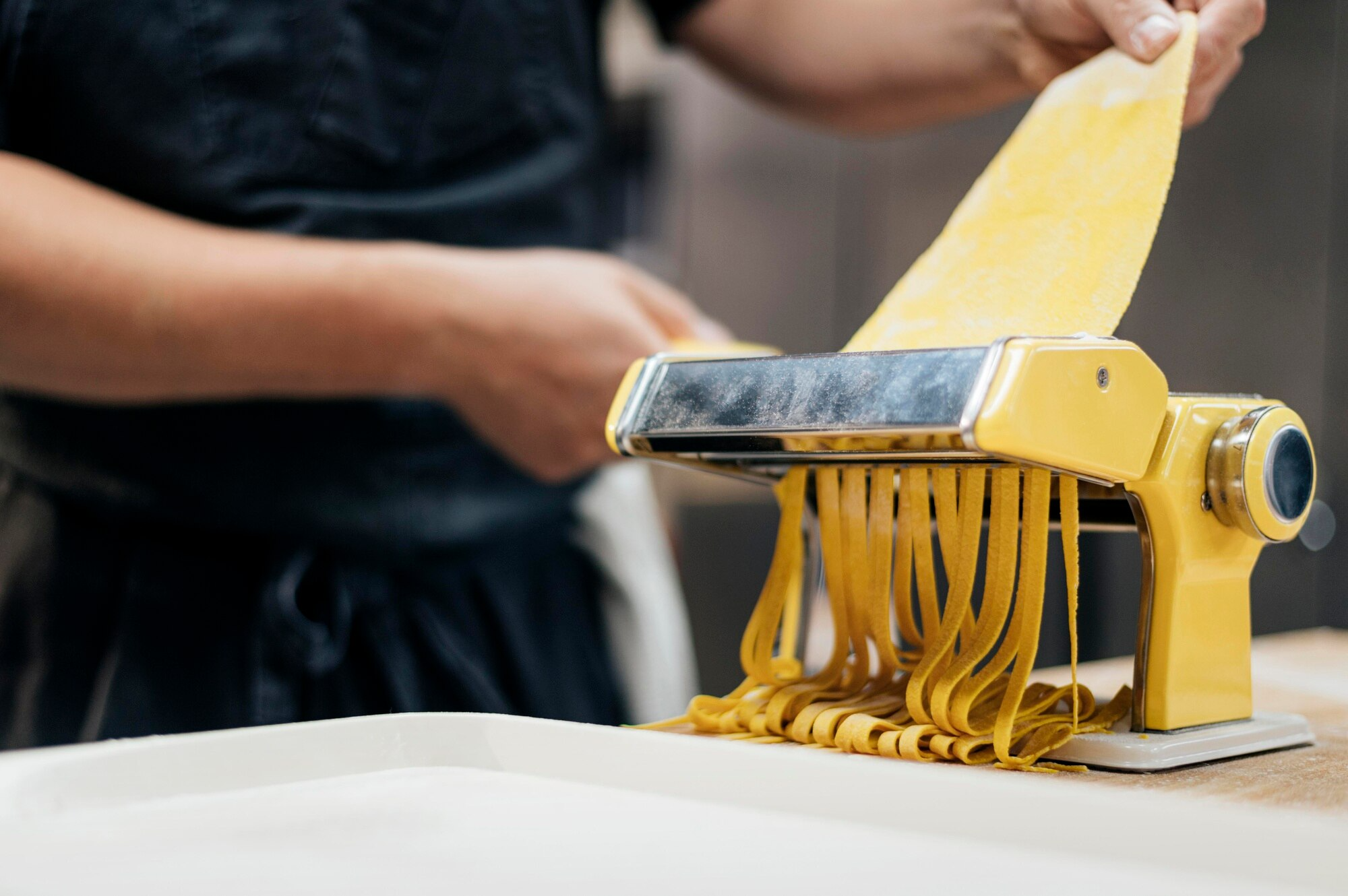Prologue: A Bowl of History
If you’ve ever eaten tortellini—those small, plump rings filled with meat or cheese—you’ve tasted a piece of Italian intimacy. Each tortellino was once folded by hand, a ritual passed down like lullabies or lullabies themselves. But what happens when demand stretches tradition too thin? Enter the tortellinatrice: not just a machine, but a mechanical storyteller of culinary evolution.
This isn’t just about gears and stainless steel. It’s about how a culture negotiates with the future—through dough, filling, and the hum of automation.
Chapter 1: What Is a Tortellinatrice?
At its most basic, a tortellinatrice is a pasta-forming machine designed to replicate the intricate process of making tortellini. It transforms rolled pasta dough and pre-made filling into thousands of tiny, sealed, ring-shaped parcels. On paper, it’s an industrial solution. But in practice, it’s a delicate dance between craftsmanship and computation.
Unlike general-purpose pasta extruders or ravioli presses, a tortellinatrice has one primary function: to replicate the traditional fold-and-press method used for tortellini. In essence, it’s a tribute to tradition performed by motors and molds.
Chapter 2: The Doughy Dilemma of Scale
From Kitchen Tables to Conveyor Belts
For centuries, tortellini were made at wooden tables in homes throughout Bologna, Modena, and the surrounding countryside. Families would gather during holidays to prepare them en masse, folding each piece like a whispered prayer. The shape itself is said to mimic Venus’s navel—a reminder that food and myth are often braided together.
But times change. By the late 20th century, tortellini had outgrown Italy’s borders, gracing tables in Tokyo, Toronto, and São Paulo. Demand exploded. The supply chain creaked. Handmade production couldn’t keep up—not in restaurants, not in factories, not even in Italy.
Thus, the tortellinatrice wasn’t born of laziness—it was born of necessity.
Chapter 3: Anatomy of a Tortellinatrice
The inside of a tortellinatrice resembles a miniature universe of logic and design. There are no flames or flour-dusted aprons—just cold precision.
Key Components:
- Dough Feeders: Dough is flattened into sheets of precise thickness, often less than 1mm.
- Filling Injectors: Pinpoint dispensers place tiny amounts of filling at evenly spaced intervals.
- Cutting & Folding Arms: Using molds or rotary dies, the machine cuts, folds, and shapes the dough into rings.
- Output Conveyors: Finished tortellini are sent down a line for drying, freezing, or immediate packaging.
In a fully automated version, this process can happen up to 500 times per minute. That’s 30,000 tortellini an hour—enough to feed an entire town before lunch.
Chapter 4: The Quiet Genius of Italian Engineering
Italian manufacturers like La Monferrina, Pama Roma, and Dominioni have elevated pasta-making machines into a sort of industrial art. A good tortellinatrice doesn’t just fold pasta—it respects it. It doesn’t smash dough into submission; it coaxes it into shape.
What sets these machines apart isn’t speed. It’s intuition.
Premium models come equipped with:
- Adjustable compression to accommodate dough moisture variations.
- Infrared sensors to detect filling density.
- Memory modules to store recipes and pressure profiles for different regional variations (e.g., Parmigiano vs. mortadella fillings).
These aren’t dumb machines—they are collaborators.
Chapter 5: The Philosophy of Mechanized Food
Can a Machine Hold Memory?
There’s a certain romantic grief around machines replacing human hands in food. After all, food is memory. It’s the smell of your grandmother’s kitchen, the muscle memory of pinching dough between finger and thumb.
But consider this: isn’t a machine like the tortellinatrice just another form of memory storage?
It preserves the shape, timing, and proportions of hand-made tortellini. It carries the tradition forward—just in a different dialect. Instead of fingertips, it uses microprocessors.
The real threat isn’t the machine. It’s the disconnection from ingredient and intention. A tortellinatrice that’s fed with care, monitored with skill, and cleaned with pride still tells the same story—just with a different voice.
Chapter 6: Economic Alchemy
Feeding a Hungry Market
In the global frozen food sector, tortellini is a booming product. Large manufacturers rely on high-output tortellini machines to serve wholesalers, airlines, supermarkets, and institutional kitchens.
The economic upside is undeniable:
- Labor Efficiency: Reduces costs by over 70% compared to manual folding.
- Speed to Market: A single machine can meet weekly quotas that would take 20 staff.
- Reduced Waste: Sensors detect filling leaks or dough tears, improving yield.
For small-scale producers, compact semi-automatic tortellinatrici open the doors to competitive scaling. What once required an army of hands can now be achieved by a team of two and a steel box.
Chapter 7: Beyond Tortellini – The Modular Future
Interestingly, the most advanced tortellini makers today are no longer one-trick ponies. Thanks to modular design, many now allow interchangeable molds and cutting heads. This means a single machine can produce:
- Cappelletti
- Agnolotti
- Mezzelune
- Even Asian dumpling shapes for fusion brands
This shift signals a broader culinary trend: machines designed not to replace tradition, but to embrace global adaptation.
Chapter 8: From Factory Floor to Michelin Star
While often found in industrial settings, tortellini makers are increasingly entering the kitchens of high-end restaurants. Why?
Because even fine-dining chefs have learned that precision doesn’t mean soullessness.
In a busy dinner service, a chef might use a tortellinatrice to prepare a consistent batch of perfectly formed pasta—then finish it by hand with a butter glaze or aged Parmigiano. This combination of machine logic and human flair results in something unique: tradition accelerated by trust in technology.
Chapter 9: The Home Kitchen Frontier
Miniature tortellini are slowly finding their way into the home chef market. Compact, counter-friendly models are being developed that let enthusiasts automate folding without compromising ingredient choice or freshness.
As the maker movement grows and cooking becomes a weekend art form, we may soon see the rise of the home-based pasta lab, where a person uses digital tools to express a very analog love.
Imagine: a QR-code recipe, a local cheese filling, and a personal machine named “NonnaBot.”
Epilogue: A Machine with a Heart?
The tortellinatrice is not cold steel—it is warm memory molded by time and necessity. It doesn’t erase tradition; it ensures its survival on a larger stage. Like a fountain pen doesn’t make a poet, a machine doesn’t make a chef. But both can become tools of beauty when used with knowledge, respect, and love.
So next time you eat a bowl of tortellini, ask yourself not just who made it, but how. Somewhere between the ancient city walls of Bologna and the blinking lights of a factory line, a machine folded a piece of history into every bite.
Stay in touch to get more updates & alerts on BaddiehubX! Thank you




